By Tommy Clarkson from the September 2013 Edition
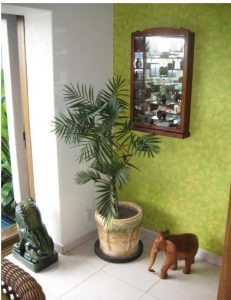
Protected by a Vietnamese temple dog and Thai teak elephant, our interior potted Parlor Palm is quite happy!
Chamaedorea elegans
Family: Arecaceae ; Sub-family: Ceroxyloideae
Also known as: Neanthe Bella, Bella Palm, Love Palm or Good Luck Palm
This delicate little character derived its name during the Victorian era when its exotic look led it to becoming a highly favored plant for one’s parlor. As a result, this has caused me a bit of consternation as we have a Parlor Palm but no parlor! Nonetheless, that popularity has continued to the point that, today, it may be the most commonly grown indoors palm in the world!
Robert Lee Riffle my tropical, botanical hero described thusly, “No species more deserves its descriptive it specific epithet than this lovely little palm; it is delicate and elegant from youthfulness unto old age.” Bingo!
Among the slowest growing of houseplants, the Parlor Palm is a good performing (just don’t ask it to roll over or play dead), small, indoor palm where it prefers bright, filtered morning light. It can also be used in outdoor landscaping as an accent palm, border plant or beautiful, tall groundcover but keep in mind its preference for more shade and filtered light. If the plant’s foliage becomes bleached it may well be a sign that it is getting that durned hot afternoon sun. If it has healthy, dark green foliage then it is properly placed!
When talking to this plant while watering (while a bit eccentric perhaps, no few gardeners do that, you know) expect a bit of a Spanish accent if it responds! Why? Because this species originated in rain forest areas of Southern Mexico and Guatemala where they grow from sea level to 4,500 feet. Its name comes from the Greek word chamai meaning “on the ground”, and dorea meaning “gift”.
It has a short, green, leaf scarred, trunk with fan shaped leaves that are dark green and, slightly arching. Its, up to eight, fronds are clad with ten to twenty leaves from a single stem. These bright green fan-shaped leaves and branching flower stems – while not eye riveting – are most pleasing looking. The solitary stem is of a light green coloration with closely positioned darker rings which might lighten as the plant ages.
As it grows so slowly it does not require repotting well, once a decades or so! While growing indoors it seldom blooms but it is not unheard of to happen. If so, these are small, subtle yellow flowers.
Easy to grow, it has a low salt tolerance but is quite adaptable to a variety of soils. Even with little water and not much sunlight it will, generally, do well. But given the sunlight discussed earlier it will flourish. Chamaedorea Elegans requires moist soil that drains well. The amount of light it gets will determine how much water it needs. Too much water will cause a number of problems such as dropping leaves and root rot.
Conversely, providing too little water is also not good. This will cause the tips to turn brown and new growth may be pale. They prefer reasonably high humidity, without which the leaf tips will turn brown. Those living in climes of low humidity – certainly not here – should regularly mist its leaves. Pruning your Parlor Palm should not be necessary unless the fronds are dead or dying, in which case they should be taken away immediately.
During spring and summer, every month or so, give it some 10-10-10 water soluble fertilizer and perhaps every three months during the winter. Remember to not overwater or let the pot stand in water. If planted indoors, you might wish to clean its fronds every five to seven days by wiping them with a lukewarm cloth. Just consider it an old fashioned, weekly, farm bath without a number three washtub . . . or does no one ‘cept Patty and me remember such as that?
This is a plant that you might consider buying the size you desire as it is a very slow grower. Inside, even after twenty years, its stem may not exceed four feet or three feet wide. However, outside it will be, perhaps, twice that height at that age. And, if outside, it probably looks better if planted alone rather than with others of its kind.
If used inside keep an eye out for common houseplant enemies such as foliar mealy bugs, scale insects and spider mites.
But, all in all, this is a wonderful, small, attractive, easy to take care of plant!
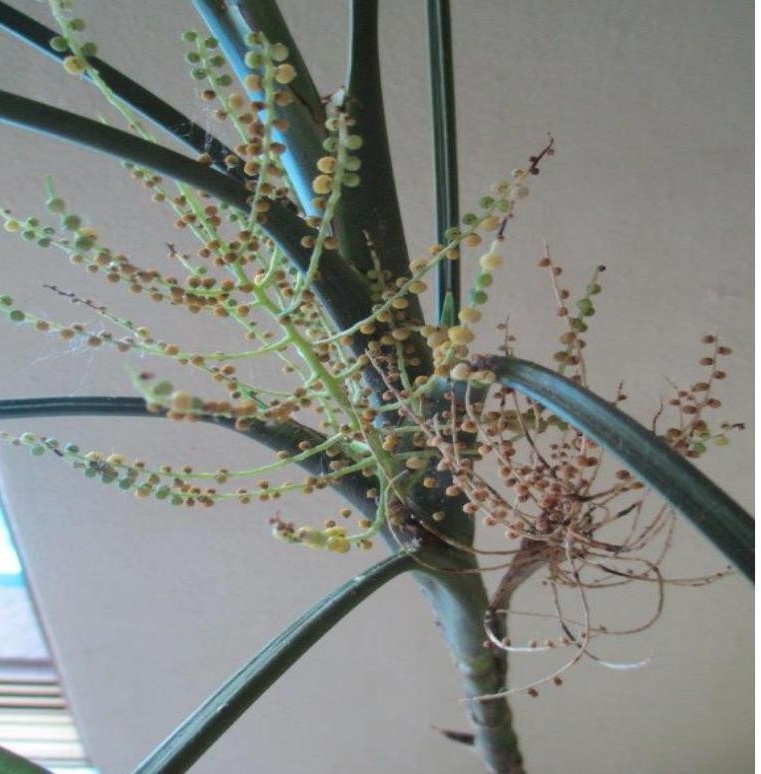
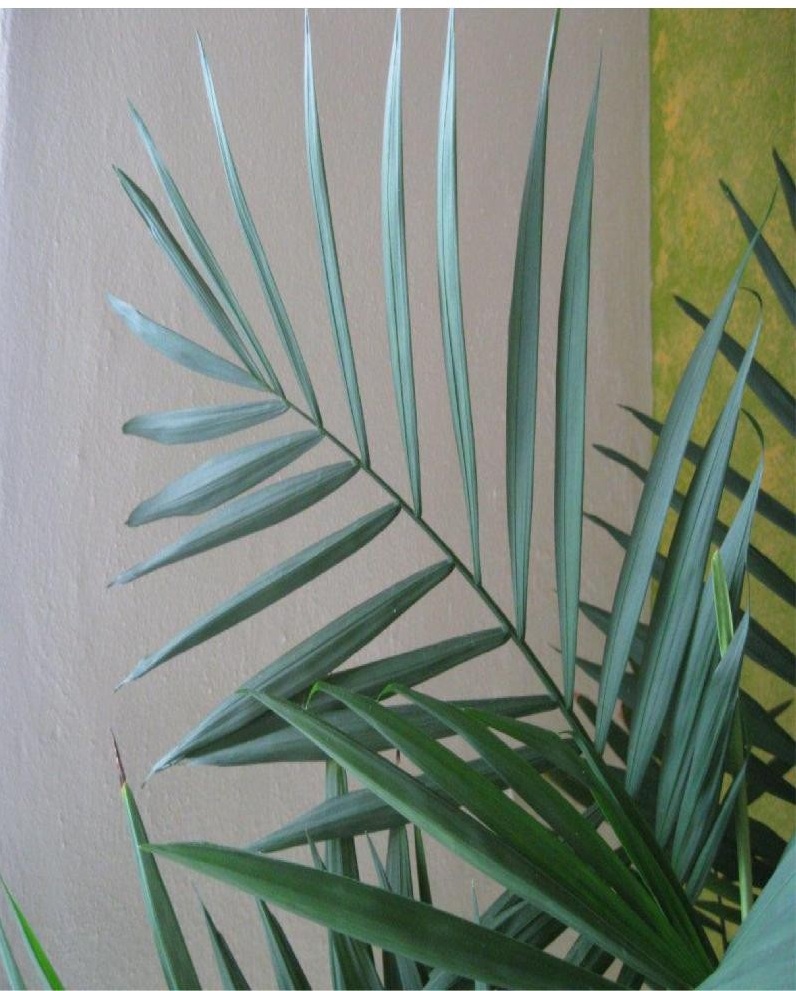
Download the full edition or view it online
—
Tommy Clarkson is a bit of a renaissance man. He’s lived and worked in locales as disparate as the 1.2 square mile island of Kwajalein to war-torn Iraq, from aboard he and Patty’s boat berthed out of Sea Bright, NJ to Thailand, Germany, Hawaii and Viet Nam; He’s taught classes and courses on creative writing and mass communications from the elementary grades to graduate level; He’s spoken to a wide array of meetings, conferences and assemblages on topics as varied as Buddhism, strategic marketing and tropical plants; In the latter category he and Patty’s recently book, “The Civilized Jungle” – written for the lay gardener – has been heralded as “the best tropical plant book in the last ten years”; And, according to Trip Advisor, their spectacular tropical creation – Ola Brisa Gardens – is the “Number One Tour destination in Manzanillo”.
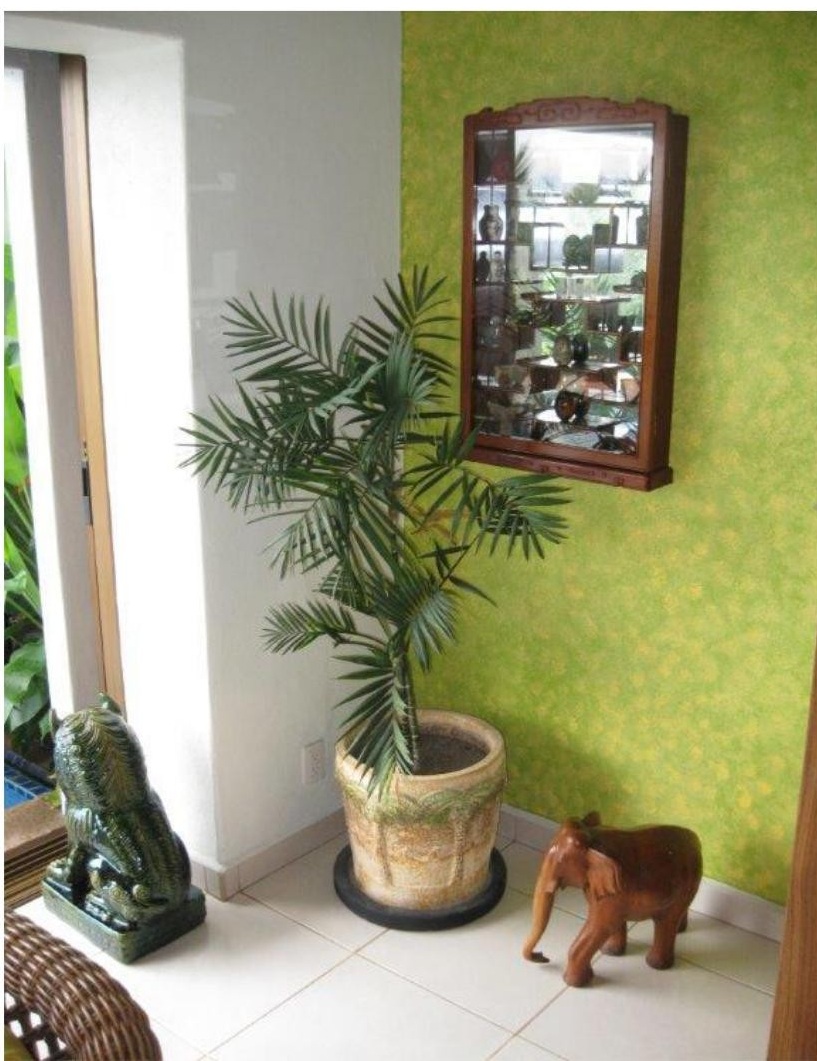

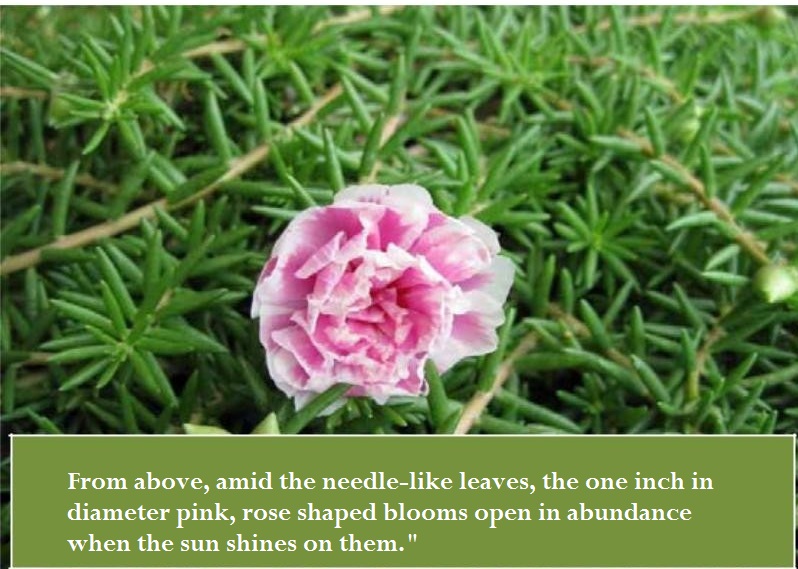
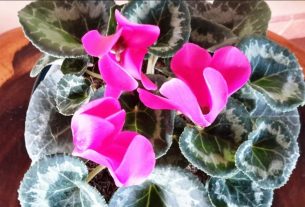

You must be logged in to post a comment.